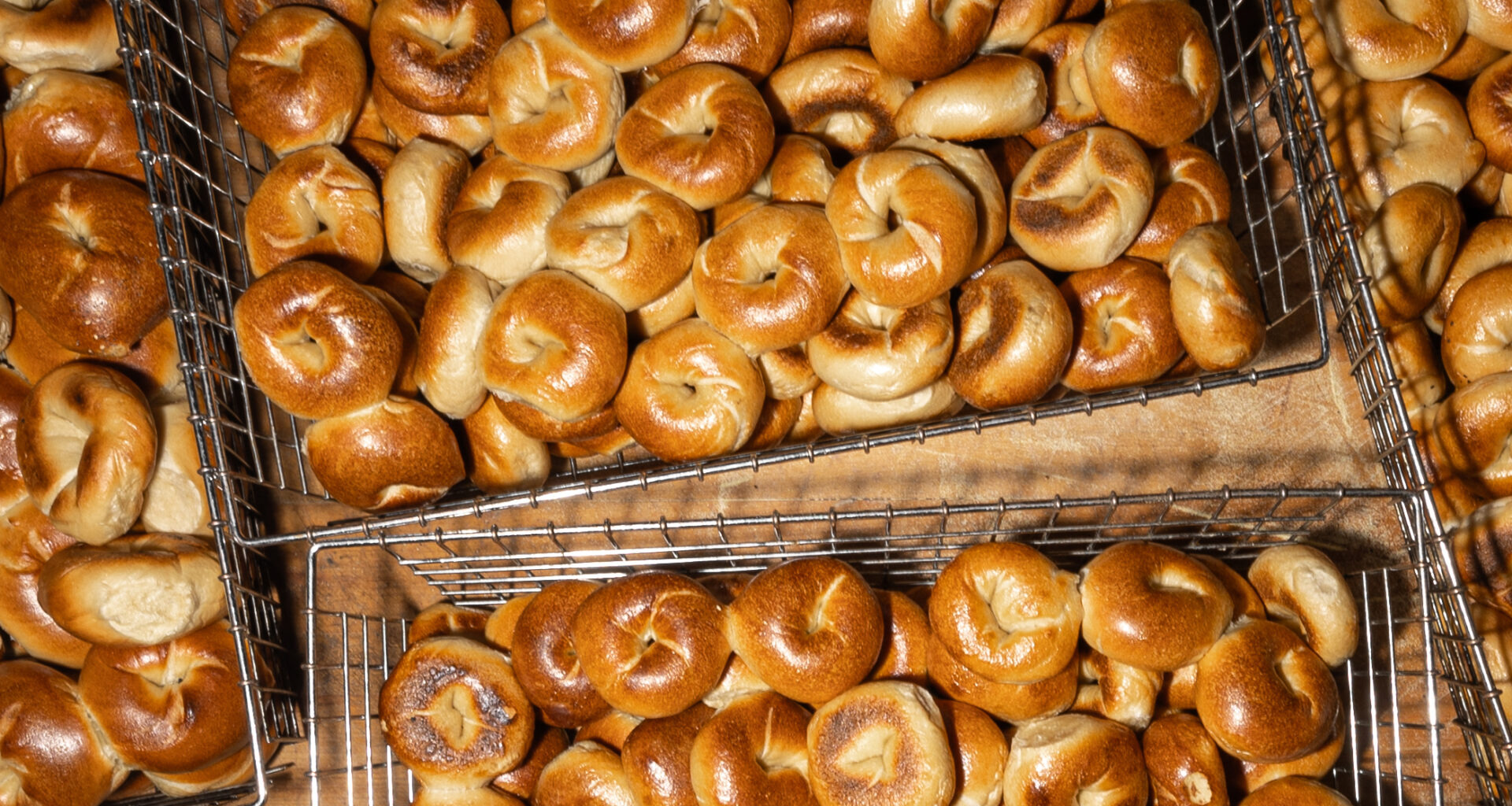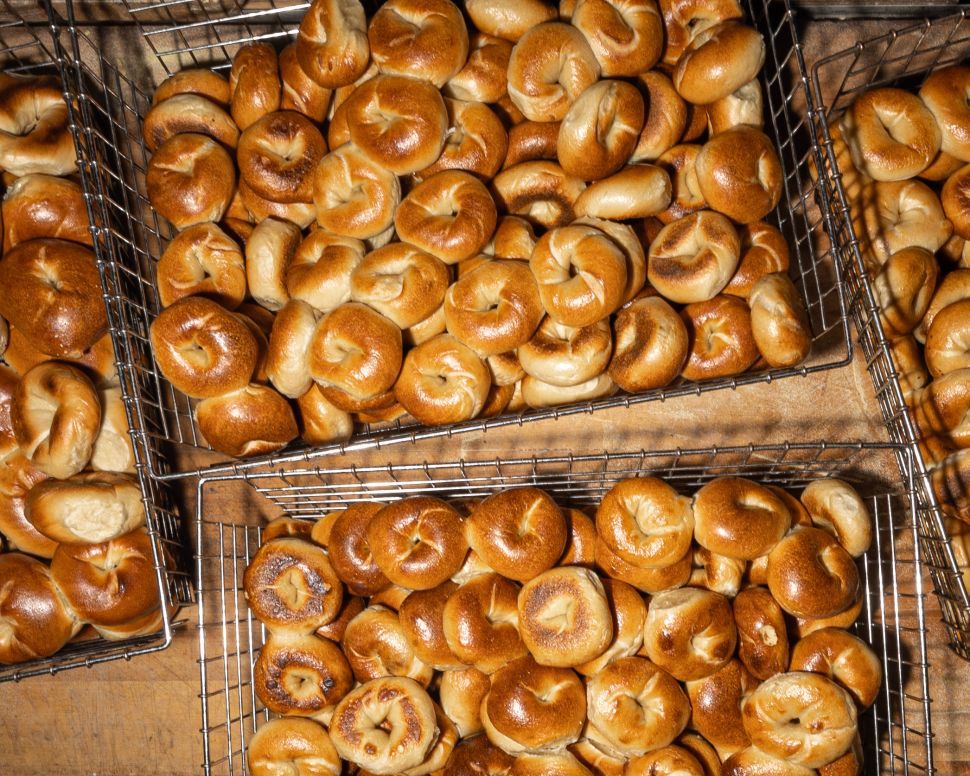 From small bakeries to global brands, New York’s bagel makers are shaping a cultural and culinary economy rooted in tradition and reinvention. Courtesy Utopia Bagels
From small bakeries to global brands, New York’s bagel makers are shaping a cultural and culinary economy rooted in tradition and reinvention. Courtesy Utopia Bagels
There are few foods more synonymous with New York City than the bagel—a simple ring of boiled and baked dough that somehow embodies the spirit of the city itself. Equal parts humble and iconic, the bagel has risen from its immigrant origins on the Lower East Side to become a global culinary symbol. Today, bagels are fueling a thriving cultural and economic ecosystem that stretches from Brooklyn bakeries to international markets, generating billions in annual revenue while preserving the heritage of craftsmanship that first defined the New York bagel.
From immigrant bread to city symbol
The story of the bagel is the story of New York. Brought to the United States in the late 19th century by Eastern European Jewish immigrants, the beygel found a new home in the tenements and bakeries of Manhattan’s Lower East Side. Early bagel bakers, organized under the Bagel Bakers’ Local 338 union, were fiercely protective of their craft, hand-rolling, boiling and baking every piece with care. By the early 1900s, New York had nearly 70 bagel bakeries, and the bread had become a staple of working-class life. By the mid-20th century, the bagel had evolved into an American breakfast essential. Industrial innovations like the rotary oven and the Lender brothers’ mass-produced frozen bagels made it a national phenomenon. Today’s artisan revival—driven by hand-rolled, malt-boiled, crusty bagels—reclaims the authenticity that first made the New York bagel famous.
“Bagels are a New York staple,” says Jesse Spellman, co-owner of Utopia Bagels in Whitestone, Queens. “They always will be. Keeping our recipes and traditions consistent for over 40 years gives people a taste of the New York culture of the past.” Spellman’s family has been hand-rolling, kettle-boiling and baking bagels in a 1947 carousel oven since 1981, and their commitment to heritage has made Utopia one of the city’s most celebrated institutions

 Mascots Len and Phyl nod to the brands that industrialized and popularized bagels nationwide, transforming a regional staple into a household breakfast. Courtesy of BagelUp
Mascots Len and Phyl nod to the brands that industrialized and popularized bagels nationwide, transforming a regional staple into a household breakfast. Courtesy of BagelUp
The bagel economy
New York remains the undisputed bagel capital of the world, home to hundreds of specialty bagel shops across the five boroughs. Iconic institutions like Ess-a-Bagel and H&H Bagels have evolved from family-owned shops to major producers and franchised brands. Ess-a-Bagel recently opened a 7,500-square-foot manufacturing facility in Harlem, while H&H plans 70 new franchise locations across the country.
“The economics of the bagel business is the same as the rest of the restaurant industry,” says Craig Hutchinson, chef and owner of Olmo Bagels in New Haven, Connecticut. “But the difference is how willing you are to be transparent with your guests and your team. We stress the importance of making guests feel seen and special. That free kindness helps our guests justify the rising costs of living in 2025 and beyond.” For Hutchinson, community and hospitality are part of the recipe. “We embraced the community and used the bagel as our hospitality vehicle. We all fell in love with the fast-paced bagel industry and never looked back.”
That sentiment is echoed by Jimmy Stathakis, founder and CEO of Bagel Market, who has reimagined the traditional shop through modern design and digital innovation. “The bagel is a cornerstone of New York life: fast, familiar and full of character. It reflects the city’s diversity and resilience. At Bagel Market, we see ourselves as part of that cultural fabric, offering a space where heritage meets contemporary taste.” He adds, “Margins remain challenging in the food service industry, particularly in New York City, but strong brand positioning and operational discipline create room for growth. We focus on scalable systems, efficient supply chains and consistent quality.”
In Maine, Jeremy and Marina Kratzer, owners of Dutchman’s Wood Fired Bagels, bring a small-town perspective to the same story. “Being as smart as you can on labor, and really managing the food costs, are keys to success in today’s ever-changing industry,” Jeremy explains. “Building relationships with your purveyors is a great way to ensure that you have someone to trust and look out for you when you need things.”
Across the Pacific, Talia and Kelly Bongolan-Schwartz, owners of Tali’s Bagels & Schmear in Hawaii, share a similar struggle, but their story is a testament to dedication. “Hand-rolling bagels is very labor-intensive,” says Tali. “It’s always difficult to balance that with pricing, payroll and profit—especially living in Hawaii, where all ingredients are imported and rent is at a premium.” Despite these challenges, they’ve built a loyal following: “About 90 percent of our customers are regulars.”
Adding to the evolving economics, Orly Gottesman of Modern Bread & Bagel underscores how growth comes from multiple lanes: “Margins in retail food are generally tight… Growth potential exists if you find ways to diversify revenue. We supplement our retail business with direct-to-consumer shipping, retail mixes and catering.”
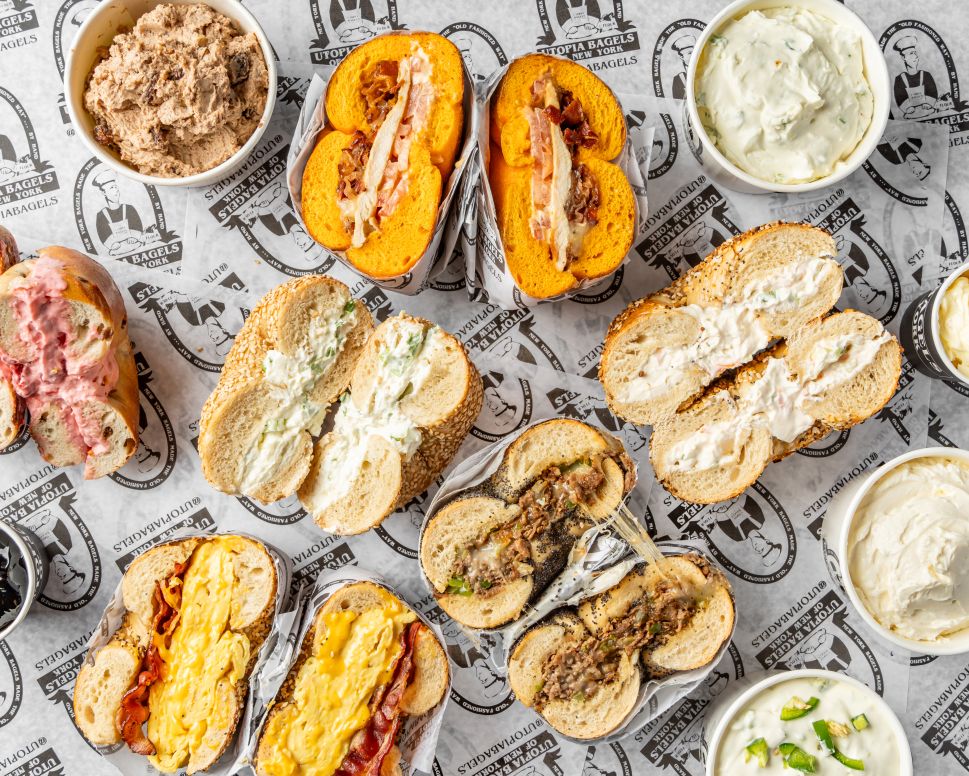
 The modern bagel economy blends tradition and trend: hand-rolled classics served alongside inventive flavors designed for a global palate. Courtesy Utopia Bagels
The modern bagel economy blends tradition and trend: hand-rolled classics served alongside inventive flavors designed for a global palate. Courtesy Utopia Bagels
From the Pacific Northwest, Brittany Erwin of B’s Bagels & Butters points to where revenue concentrates: “In Washington there is definitely growth potential, but not in the form of a traditional bagel shop… any growth is in the form of sandwiches or catering.” Erwin adds, “In Washington there has been a bagel explosion in the last 3 years, and the majority of shops are leaning away from NY style. Most of them are leaning towards the sourdough bread craze and serving airy, hard crusty bagels.”
Nationally, the U.S. bakery sector worth over $60 billion with bagels maintaining rapid growth. The global bagel market reached $5.58 billion in 2024 and is projected to hit $7.35 billion by 2030, growing at nearly 5 percent annually. Europe and Asia have embraced the bagel as both a fashionable food and a cultural export.
In Denmark, Emily Bridges, founder of Bagel Belly in Copenhagen, is part of that international wave. “For Americans living in Copenhagen, bagels are an everyday food; they’ll grab one on the way to work or stock up for the week. For Danes, it’s more of a special and unique treat, and something fun to enjoy on weekends or share with friends” she says. “For many of my customers, my bagel is the first bagel they’ve ever tried, which is always exciting and a big responsibility!”
The bagel as cultural currency
More than just a breakfast, the bagel carries deep symbolic weight: of identity, comfort and connection. Declared New York’s official state bread in 2008, it remains a culinary shorthand for the city’s diversity and drive. “NY bagels are iconic because of their long-standing history in a busy, busy world,” says Hutchinson. “We realized that the real secret wasn’t just the bagel itself, it was dedication to community, to early hours and to always baking fresh. Those are the shops that become staples.”
Stathakis adds, “New York bagels have a texture, flavor and history that are unmatched. The secret lies not only in the city’s water but more importantly in its culture: the precision, the pace and the pride of generations who perfected this craft.”
For Yero Rudzinskas, owner of Baltik’s Bagel in Richmond, Virginia, the story has gone national: “The bagel has outgrown the five boroughs and occupies a special place in the imagination of Americans broadly. Of course, the bagel is one of the most recognizable New York culinary exports, but at this point, everyone has the right to expect a freshly baked bagel close enough to enjoy every day of the week.”
From Copenhagen to Honolulu, the New York bagel’s DNA travels well, even as it adapts. “People are hungry for bagels all over the world,” says Bridges. “A bagel transforms any time it’s made in a new location: ingredients, taste, even the malt syrup, but the soul stays the same. The soul of a New York bagel is rooted in tradition but never stops evolving.”
Modern Bread & Bagel’s Gottesman frames that tradition through inclusion. “Bagels are one of NYC’s most culture-centric foods… contributing to that identity meant making our version open to everyone, those avoiding gluten and those who just want a delicious, authentic bagel, so people don’t feel like they’re giving anything up.”
And in Washington State, Erwin sees the culture expanding via social buzz and community ritual. “The bagel boom has spread to TikTok which means bagels are trendy for all ages,” she says, noting that what began as a treat has become a daily staple for many regulars.
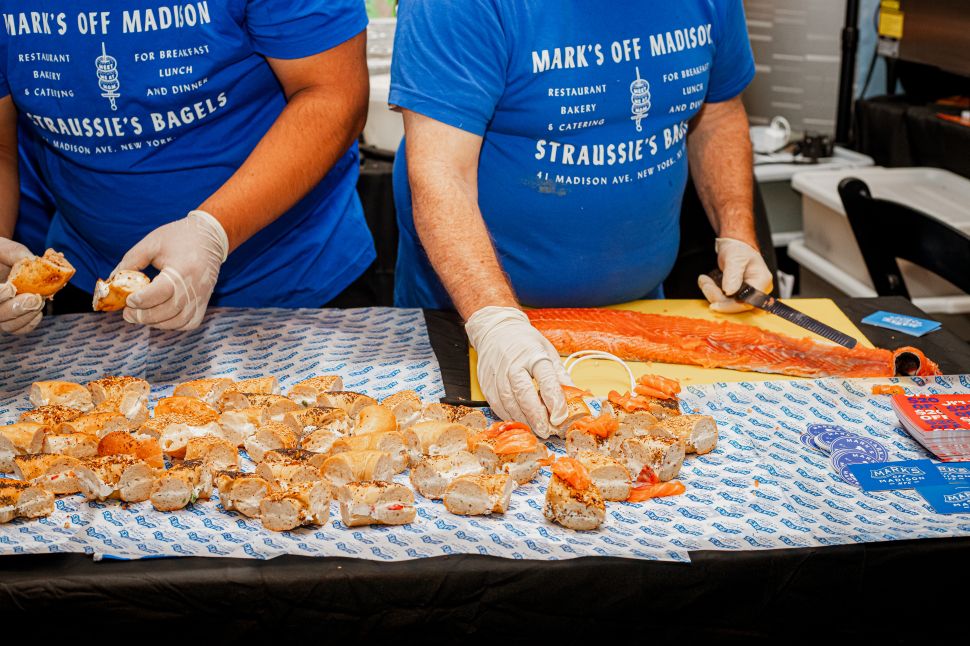
 At BagelFest, veteran bakers showcase the enduring art of New York bagel-making—boiled, baked and served with a side of nostalgia. Courtesy of BagelFest
At BagelFest, veteran bakers showcase the enduring art of New York bagel-making—boiled, baked and served with a side of nostalgia. Courtesy of BagelFest
The new wave: festivals, global influence and social impact
The modern bagel is no longer confined to the five boroughs. It’s a global connector. The rise of BagelFest, founded by Sam Silverman in 2019, has elevated the humble bagel into a worldwide cultural event. Hosted annually at Citi Field, with this year’s event on November 16, the festival attracts thousands of attendees and dozens of competing bakeries, each vying for the title of “Best Bagel.”
Silverman’s mission extends beyond the event itself. Through BagelUp, he and his team are teaching bagel-making to new audiences and using food as a bridge between cultures in New York, one of the most diverse cities in the world. BagelUp offers immersive hands-on classes where locals and international tourists alike can learn the art of crafting authentic New York bagels. These classes draw aspiring bakers from around the world eager to experience the city’s culinary traditions firsthand.
BagelFest partners are spreading that same spirit of connection globally. Among the most inspiring collaborations is between BagelUp exhibitor Olmo Bagels, which has partnered with Oído, a nonprofit culinary school in Mexico’s Yucatán Peninsula led by Chef Gabe Erales, the winner of season 18 of Top Chef. Together, they’re building cross-cultural culinary programs that celebrate craftsmanship and community, from New York kitchens to Mexico’s rural classrooms.
“Many of these kids have never had the means to travel outside their community,” Erales explains, “but through food they can connect to the world. When they see the cultural tie between bagels and New York, it’s like a window into another culture. Earlier this year, we took a group of students to Oaxaca to visit a friend’s cooking school. It was their first time on a plane, and for them, it was like going to Disneyland.”
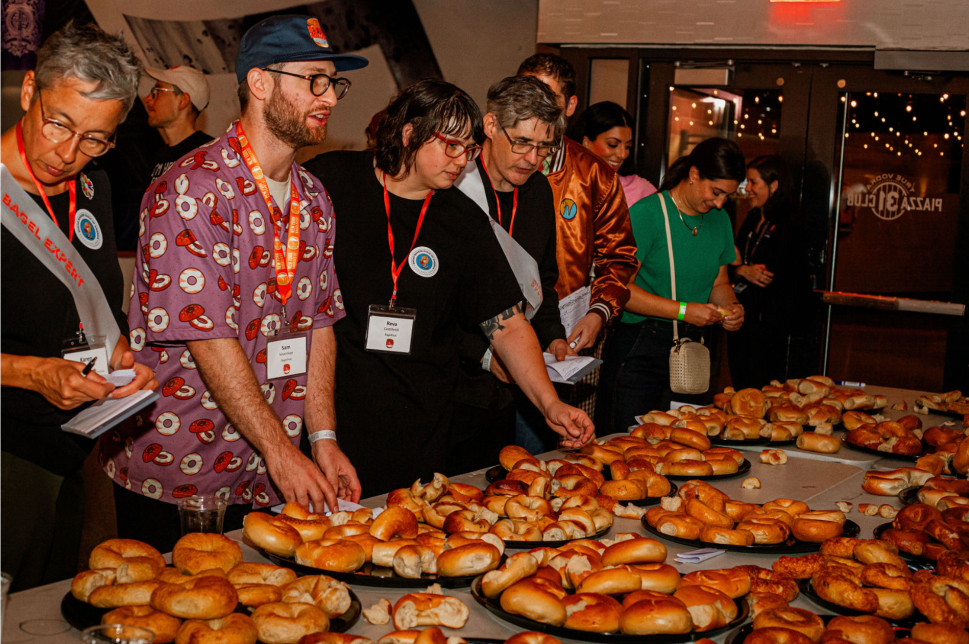
 At BagelFest, bakers and enthusiasts gather to taste, rank, and celebrate New York’s most iconic food that has grown into a $7 billion global market. Courtesy of BagelFest
At BagelFest, bakers and enthusiasts gather to taste, rank, and celebrate New York’s most iconic food that has grown into a $7 billion global market. Courtesy of BagelFest
The taste of tomorrow
As New York continues to evolve, so does its most famous food. The next generation of bakers is blending tradition with innovation: experimenting with sourdough starters, regional grains and globally inspired toppings while honoring the heritage that made the bagel a symbol of community.
Gottesman sees the future in “continued diversification: more dietary-inclusive options, more direct-to-consumer retail products and technology integration for ordering and fulfillment,” alongside neighborhood shops that “combine excellent product with smart operations.” Erwin is blunt about the operational direction: “More sandwiches… in this economy we need to be building bigger check averages,” she says, while hoping quality won’t slip as the category scales.
“I think the bagel business is heading in a strong direction,” says Spellman. “It’s one of the few foods that everyone, across ages and backgrounds, continues to love. It’s hard on the outside, soft on the inside—like a true New Yorker”.
From the bustling counters of Queens to the teaching kitchens of Quintana Roo, the bagel continues to unite people across borders. Whether in New York, New Haven or Mexico, it remains more than bread. It is a bridge between cultures, a testament to resilience and a rising symbol of how simple food can inspire extraordinary connection.

